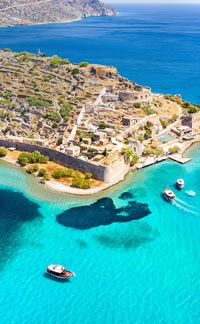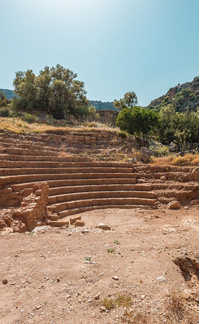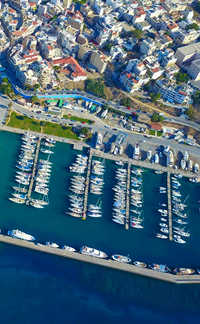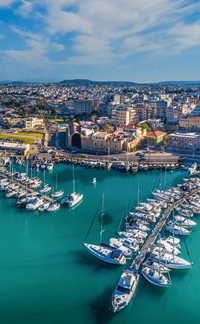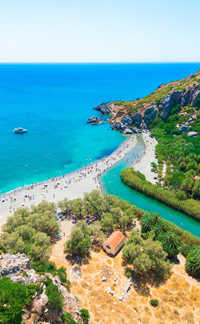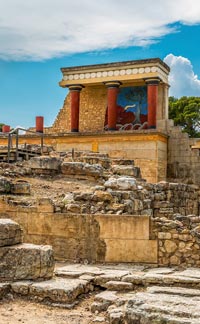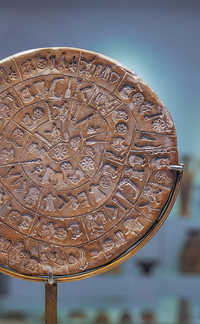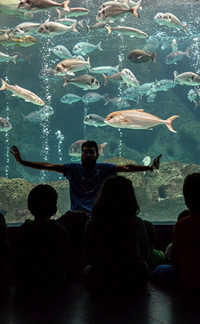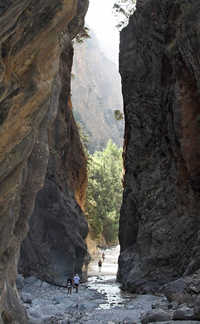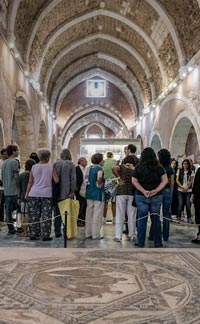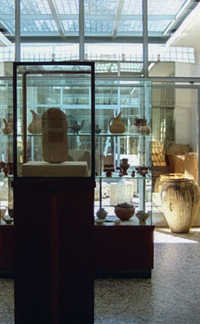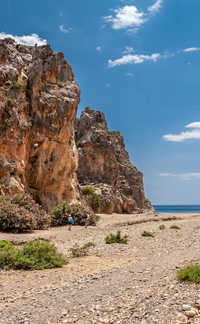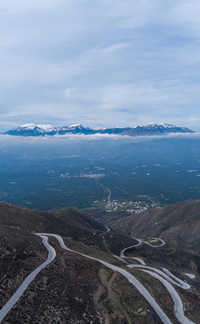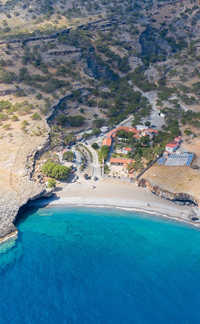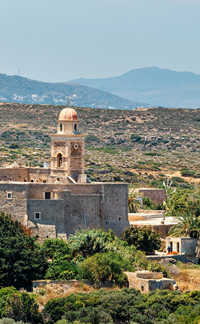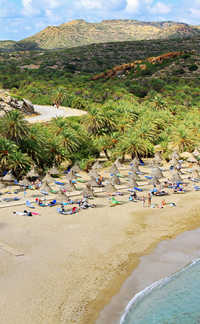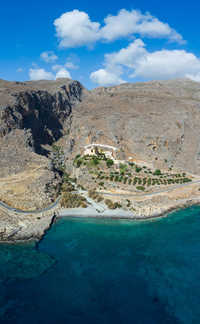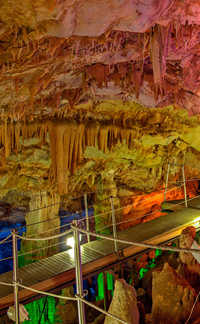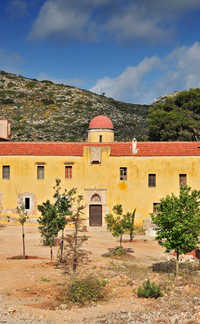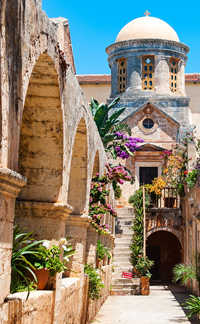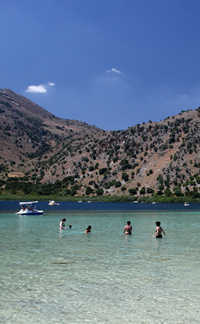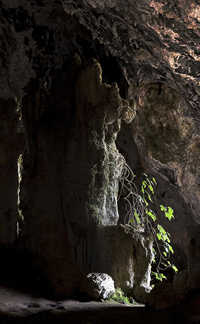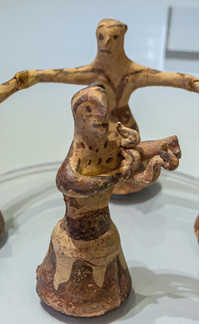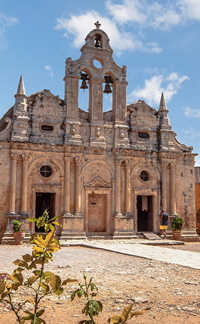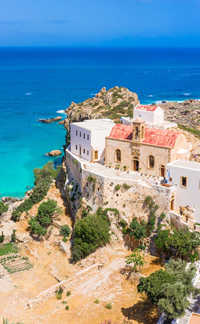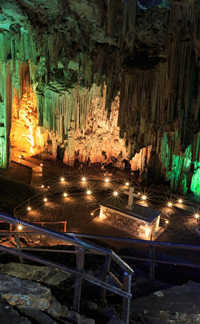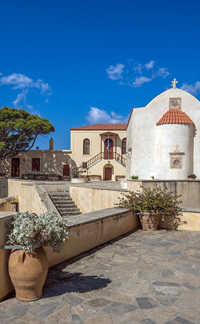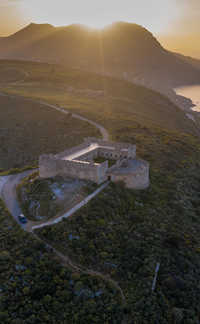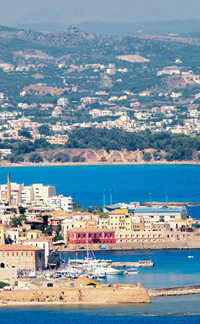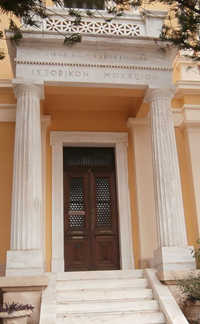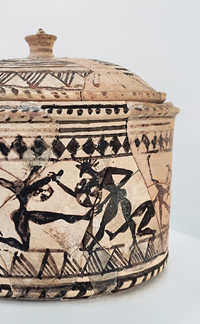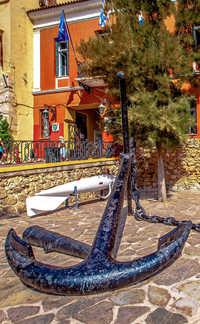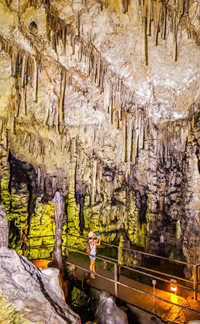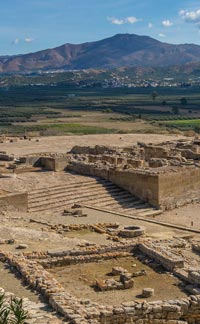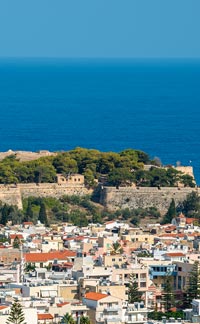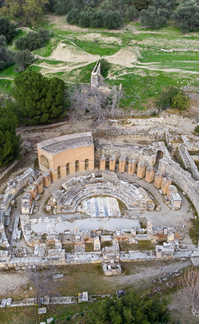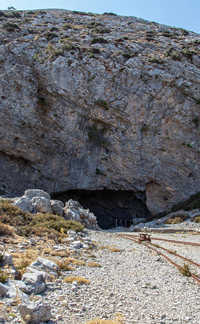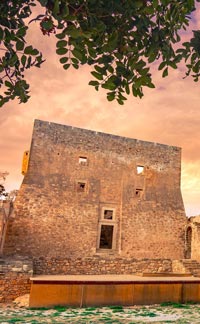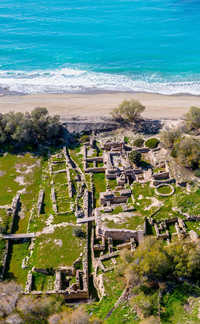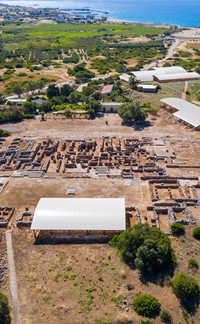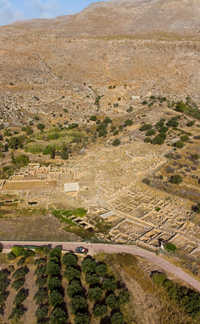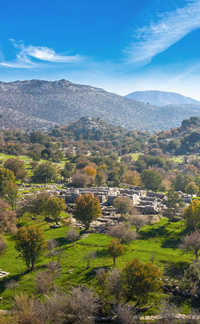Crete attractions
Today, Spinalonga, a tiny (400m x 200 m), teardrop-shaped island in eastern Crete, about 12 km north of Agios Nikolaos, is best-known for its recent history (1903-1957) as a leper colony
Lissos enjoyed prosperity and significance from about 300 BC-400s AD, and eventually were destroyed by Saracen Arabs from Spain in the early 9th century.
The Marina of Agios Nikolaos is a modern, well-equipped harbor located in one of Crete’s most picturesque coastal towns.
The Port of Heraklion is not only the largest and busiest harbor in Crete, but also one of Greece’s most vital maritime hubs.
Tucked away on the southern coast of Crete, Preveli Beach is one of the island’s most enchanting natural treasures.
The city of Knossos was the principle population center of Minoan civilization, and the site of the largest Minoan Palace ever built
Heraklion's Archeological Museum is one of Greece's best museums, and one of the most important in Europe
As one of Europe’s largest aquariums, Cretaquarium offers visitors a unique opportunity to explore the magnificent Mediterranean sea world
This spectacular landform runs south about 18 km from the village of Omalos in the north into the village of Agia Roumeli on the Sea of Libya on the south coast
Located near the Venetian Harbor in Chania's Old Town, the Archeological Museum of Chania shares and interesting, coincidental site name with its counterpart in Heraklion
The 8-room museum was established in 1970 to house recent archeological finds in eastern Crete. As of autumn, 2015, the museum was closed for remodeling with no definite re-opening date scheduled as of then
he part of the gorge tourists generally visit is not very long; it's about a 3 km walk if you start at the trailhead which is reachable by hiking or driving a gravel road from Matala.
Forming a 10 kilomeeter-wide, fringe-like barrier between the Libyan Sea and the Mesara Plain on the south and north, respectively, the Asterousia Mountains in south-central Crete run east and west for about 50 km.
The monastery's history goes back to at least the 1200's AD. The name "Koudoumas" is likely a surname, and is found in Venetian-era documents about the area
This monastery, one of Crete's most important, was founded in the 15th century in the semi-desert of extreme northeast Crete, about 15 km southwest of Cape Sidero, Crete's extreme northeasterly point
You can't get much further northeast in Crete than the palm forest of Vai. Just 8.5 km from the island's extreme northeast point, this is the largest native palm forest in Europe.
Kapsa Monastery sits on an isolated stretch of Crete's southeast coast, 30 meters above the narrow ribbon of the coast road, on a level spot on the precipitous face of an upgrade, near the mouth of Perivolakia gorge
The cave was often used as a hideout by brigands and fugitives. Neolithic tools and pots have been found there. Local villagers would store their cheese there and let it mature, also. They called it the "cheese of the hole."
If we hold with the image of Crete as a wingless dragon traveling west, that large bulbous thing on the back of its head, which would, geographically, be the north part of west-central Crete, is called the Akrotiri peninsula
If you visit only one monastery in Crete, this would likely be your best choice. It's very close to Chania, and if you find yourself favorably impressed you can also visit the Gouvernetou Monastery just a few kilometers to the north
Kournas is both a lake and a village about 30 km southwest of Chania, 3 km inland from the small resort village of Paralia Kourna (Kournas beach), and 4 km inland from the tourist center of Georgioupoli.
Just inside the large cave entrance (which throws a lot of light into the cave), there is a little church with a metal star mounted on top of its facade. It shares its name with the cave; the church of Agia Sophia (Holy Wisdom).
The ruins of the Minoan villa at Agia Triada, near the central portion of the south coast of Crete, command the western end of a coastal ridge which looks down onto the Mesara Plain
The monastery's history goes back to the time of Venetian rule (1205-1669). It's construction was completed in 1587. It's thought to be named after the founder, a monk with the surname Arkadios
The full name of this monastery built upon a rock overlooking the sea in southwestern Crete is Panagia Chrisoskalitissa (Our Lady of the Golden Step)
Melidoni cave is sited on a ridge on the southern slopes of Mt. Kouloukonas, about 250 meters above sea level and overlooking northern Crete's central coastal plain.
The monastery, on the island's south-central coast, is somewhat in the middle of nowhere, but it's so beautiful that it's worth the trip. The official name for it is the Holy Stavropegic Preveli Monastery of St. John the Theologian
Mythology says that there was a musical contest here between the Sirens, the creatures who lured sailors to their deaths on the rocks with their enchanting voices, and the Muses, the goddesses inspiration in the arts and sciences.
Marina of Rethymno is located within the urban fabric, so within a few meters to have all the benefits that can be useful to visitors with boats
The museum offers an overview of Cretan history from the early Byzantine era up to the present time. Its focus, and original goal, was to preserve various kinds of material from the medieval and modern eras of Cretan history
Founded in 1985 after 50 years of efforts by locals to establish it, the Archeological Museum of Sitia is one of the best on the island
The museum features ship models, weapons, nautical instruments, and a model of Chania during Venetian rule (1205-1669 AD)
Not far from the village of Psychro in east-central Crete and 15 km south of Malia is the Dikteon Cave, also called the Psychro Cave. It's probably the best-known cave in Greece, because it is considered the birthplace of the god Zeus
Falassarna was a major ancient port city on the northwest coast of Crete. It minted its own coins stamped with a trident on one side and the first two letters (FA or ΦΑ) of the city's name on the obverse
Of the three cities that were united under one metropolis by Minos, the third, which was Phaestus, was razed to the ground by the Gortynians
Built on a low hill known as "Paleokastro ("Old Castle"), the Fortezza occupies the north end of a wide peninsula on which the ancient city, called Rhithymna, was built
Gortyn was built on a rise of land in the Mesara Plain, which is where Crete was first inhabited. A tradition says the Gortyn was founded by Gortys, the son of Radamanthys, king of Phaistos, who was a brother of King Minos
The Ideon Cave, also known as Ideon Andron, is located in almost the exact geographical center of the Cretan land mass, on a high elevation on the east side of Mt. Psiloritis.
Kazarma Fortress, in Sitia, northeast Crete, built in the 13th century, guarded this eastern Mediterranean port for its Venetian masters during the later period of the Byzantine era
Kommos, on that part of the southern coast of Crete which runs north-south at the island's approximate midpoint, was originally a stone age village, which became an important port during the Bronze Age
At 7,500 square meters (nearly 2 acres), the Minoan palace at Malia (37 km east of Heraklion) is Crete's 3rd largest palace site
Zakros is the smallest of Crete’s 4 excavated palaces (the others are Malia, Phaistos, and Knossos). The extent of the palace is a bit larger than an acre (4,500 square meters) and was the focal point of a larger settlement
The palace, which was likely an industrial, administrative and religious center, being on the main trail from Knossos to the Ideon Cave near the summit of Psiloritis, was likely a stopping-off point for pilgrims.

